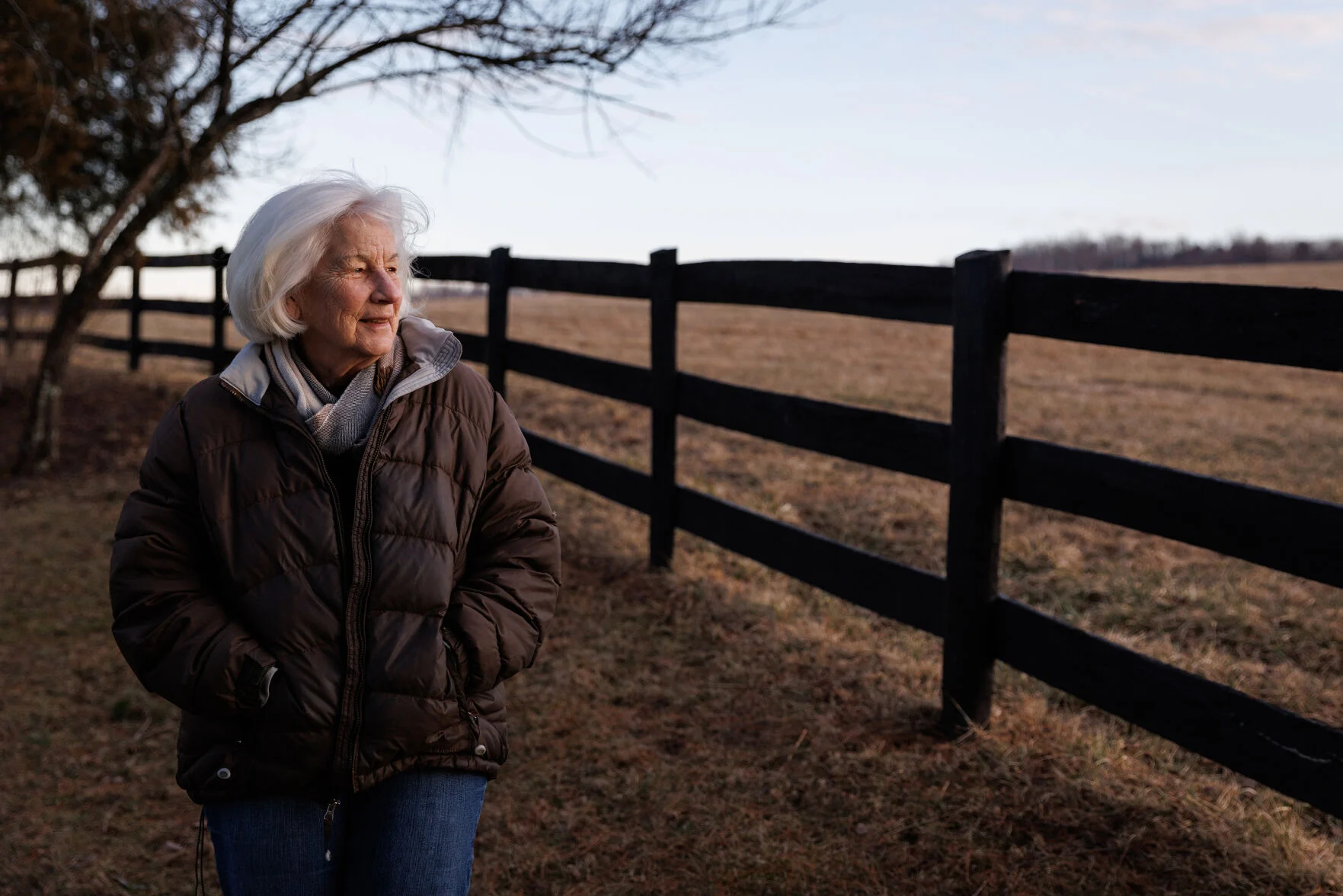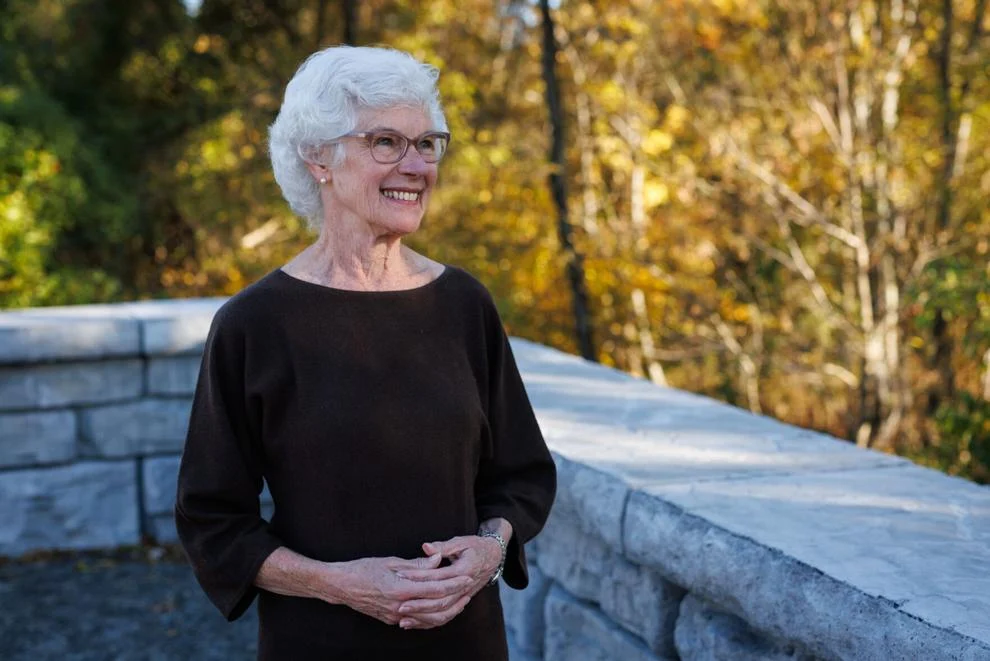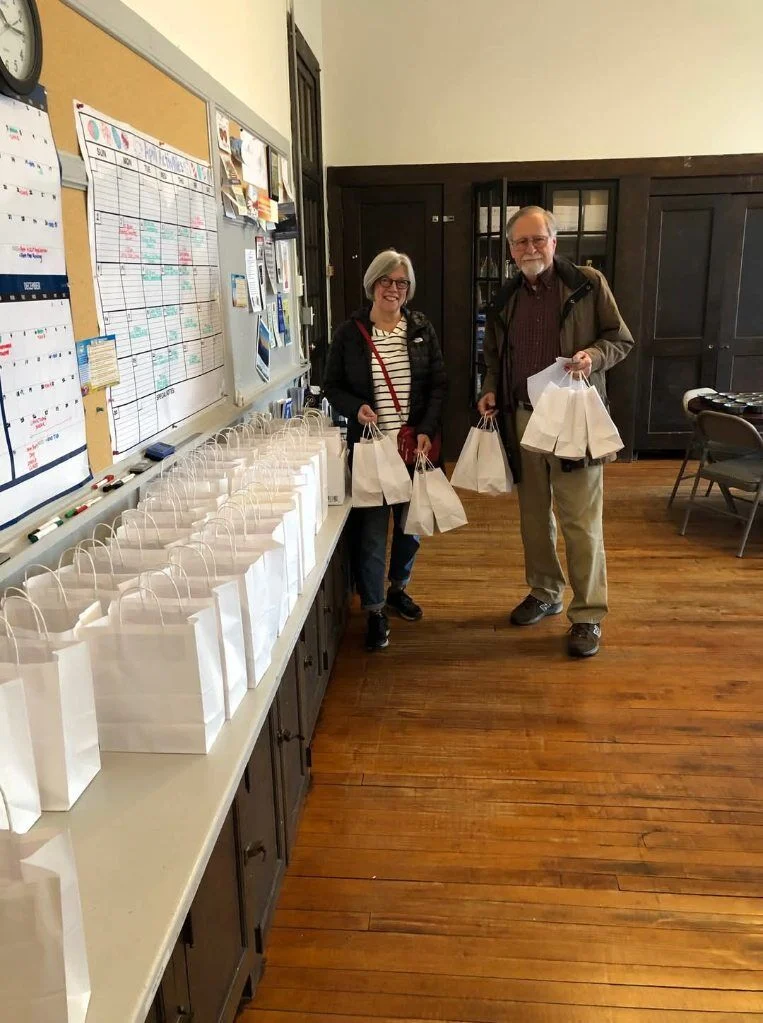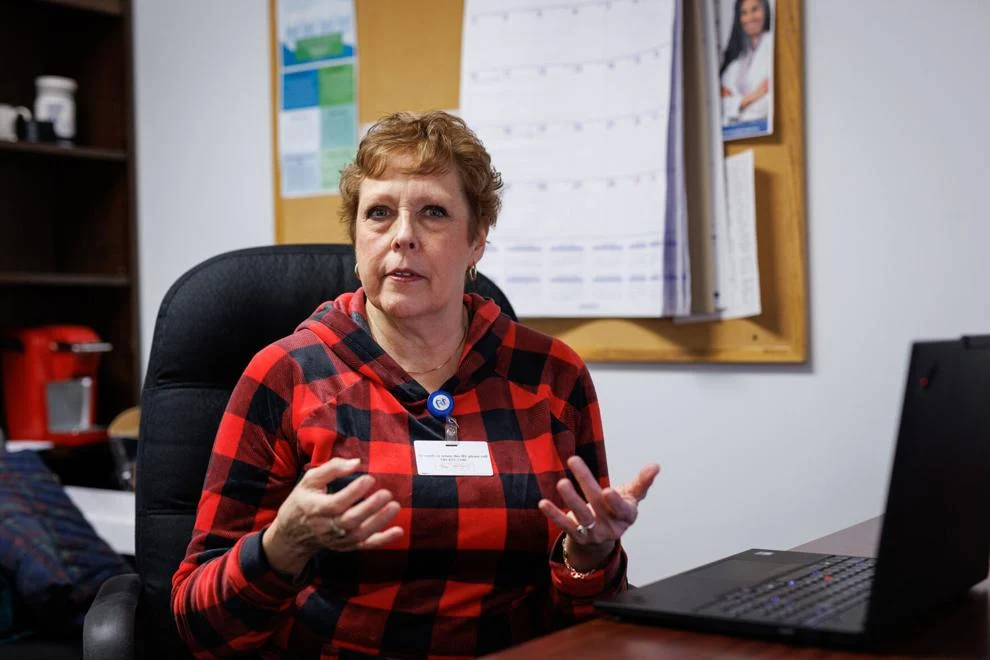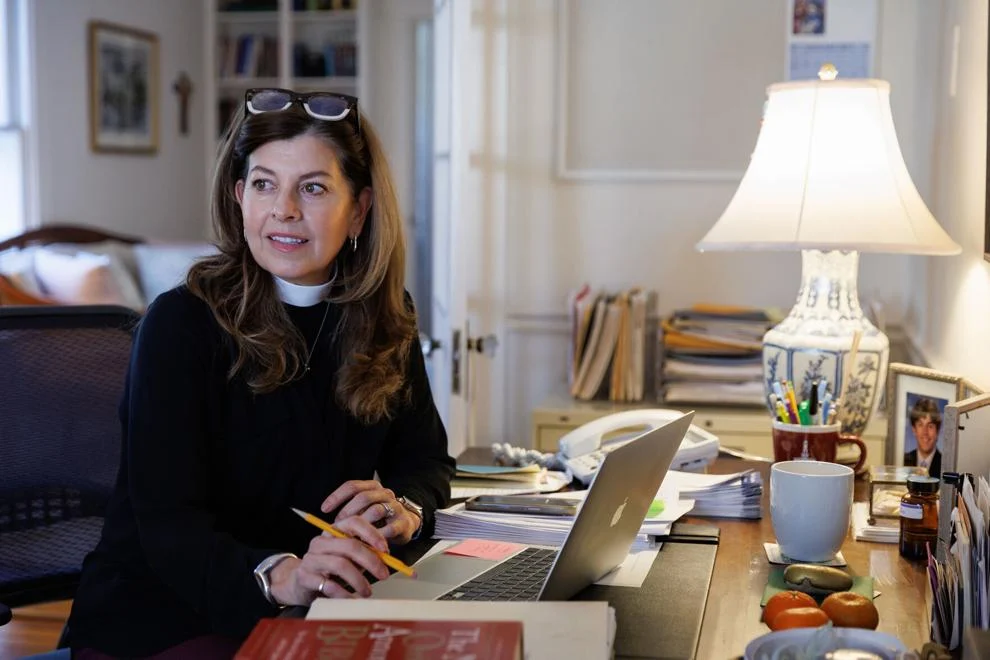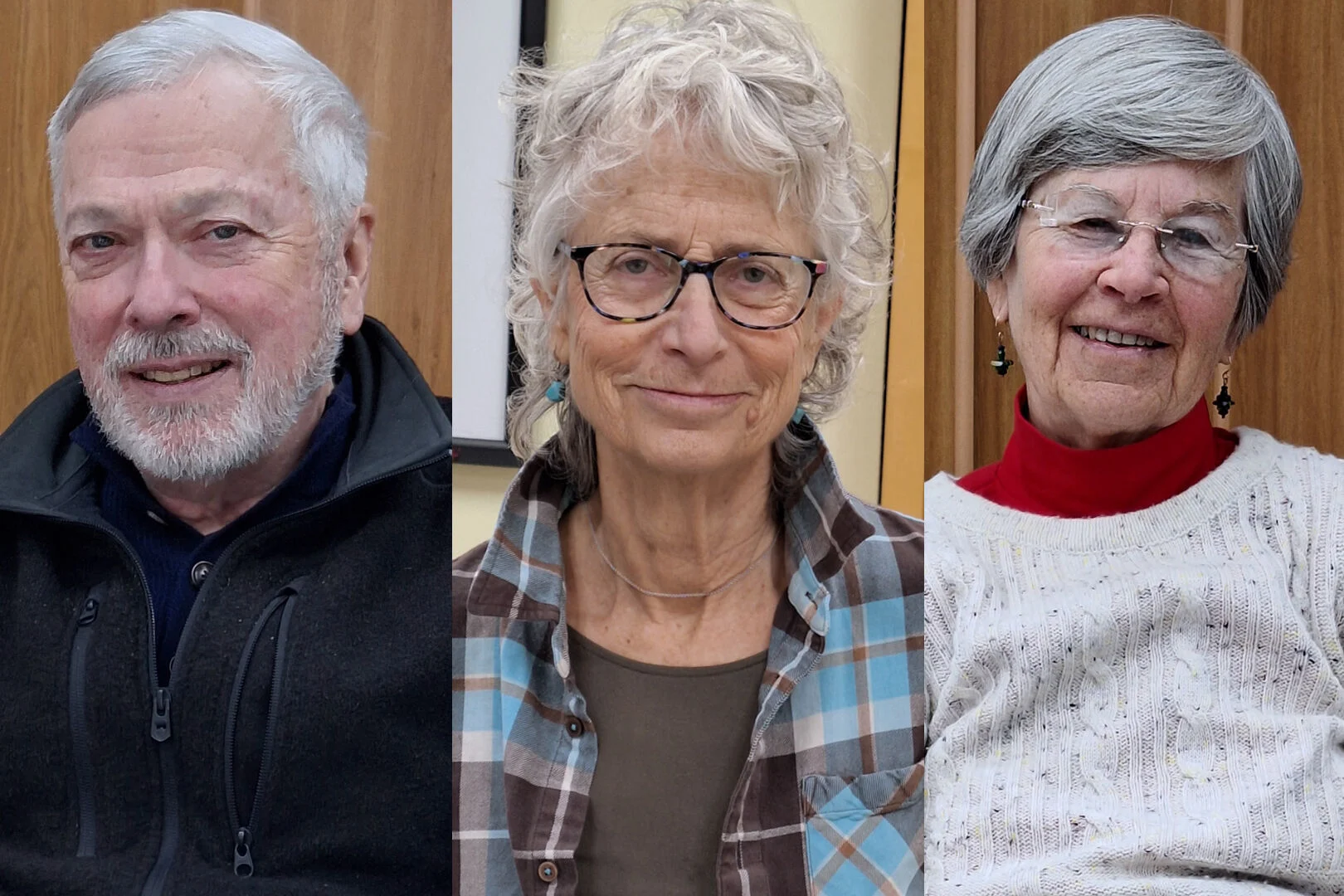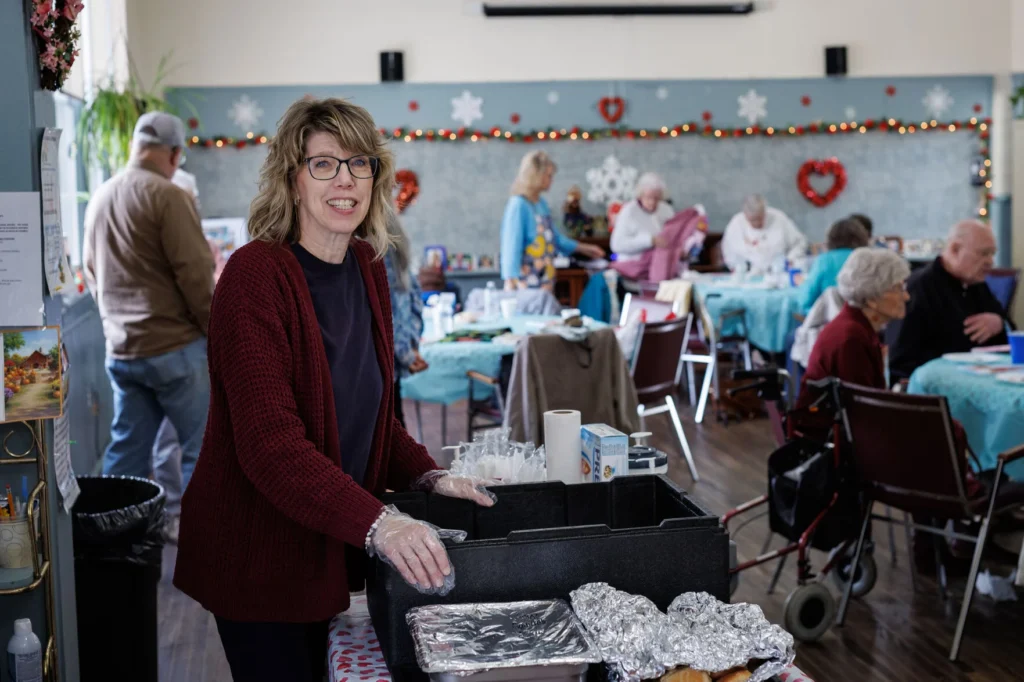Growing old and alone in Rappahannock County
Nancy Studds is 79 and lives by herself in her Sperryville home. And that gives her pause.
“If you fall and you can’t get up,” she said, “you know nobody’s checking on you.”
She zeroed in on a common fear among seniors who, like her, are alone. “The difference between couples and singles is that, in the middle of the night, I don’t have a partner to call the ambulance.”
But Studds did something that many in her situation don’t do — she stayed engaged. Specifically, she joined Rapp at Home, the local nonprofit that helps seniors stay connected and in their homes. Studds leads a weekly “Walk and Talk” stroll and is part of a monthly “Conversation on Aging.” She also participated in Rapp at Home’s Ready or Not program, through which small groups of older Rappahannock residents work together to prepare for life changes as they age.
She thinks she’s “benefitted as much as anyone” from those connections. “I have come to understand the important role this organization serves.”

“People in general aren’t very open about saying, ‘I’m lonely,’” said Joyce Wenger, Rapp at Home’s president. “But we do see a lot of people who may be.” (Photo/Luke Christopher)
Big challenge
No question that Rapp at Home and Aging Together — along with other regional organizations that address the mental and physical health of older adults — recently have sharpened their focus on social isolation. And, particularly since the COVID pandemic, they seem to be making progress. Rapp at Home, for instance, now has close to 700 members, or what it calls “friends.”
But finding those who in their later years have become more and more disconnected, and then getting them to engage with others, is a big challenge.
“People in general aren’t very open about saying, ‘I’m lonely,’ “ said Joyce Wenger, Rapp at Home’s president. “But we do see a lot of people who may be.”
She recalled a field trip a group of seniors took to the Smithsonian’s National Air and Space Museum annex, near Dulles International Airport. “When we were done,” remembered Wenger, “one woman said, ‘That was the best thing I’ve done all month. The museum was fine, but the bus ride, and being able to just sit and talk with people for an hour each way was wonderful.’”
Still, as Ellen Phipps, executive director of the Culpeper-based Aging Together, pointed out, making connections with those who are isolated requires a tactful touch.
“I don’t think it’s our job to be beating down doors and trying to convince people that they need resources,” she said. “It’s certainly their prerogative to remain alone and that has to be respected. It’s more about finding people who want help, but just don’t know where to go.”
Often, connections strengthen more casually, over time, such as between older people and the volunteers who deliver their meals or drive them to appointments. That can open up conversations about how the senior is eating, if they’re taking their medications, or if they need to have something fixed.

Volunteers Ralph Bates, vice president of Rapp at Home, and Suzanne Weiss, take gift bags to deliver to Rappahannock seniors, and visit with them at their homes, in a program called Rapp at the Door. (Photo/By Tara Inabinett)
Rapp at Home reaches out in other ways, too.Through its Rapp at the Door program, it delivers gifts to members and others in the community who are homebound or thought to be isolated. Last year it made more than 250 deliveries. Its Friendly Visits initiative connects trained volunteers with older adults who they go see or call every month. During visits, they can take walks, play cards or maybe sit just around the kitchen table and talk.
Encompass Community Supports, the social agency serving the five-county region, (Rappahannock, Culpeper, Madison, Fauquier and Orange) recently launched a similar program in Culpeper County, called Two’s Company.
“The idea is to forge new friendships, and give the older adults some stimulation and maybe get them interested in something new,” said Kathleen Watson, who manages that outreach program. “Maybe they don’t have family nearby, and they don’t know their neighbors because everyone’s moved away.
“It’s so much harder to make friends when you’re older,” she added. “You know, little kids can bond over ‘I like your Hello Kitty shirt’ and be best friends forever. But as we get older, life gets in the way.”
Collateral damage
U.S. Surgeon General Vivek Murthy set off alarms in 2023, when he warned that social isolation among older adults can increase their risk of physical maladies, from heart attacks and strokes to Type 2 diabetes and depression.
“That really highlighted the urgency and the seriousness of the issue,” said Phipps, of Aging Together. “We already had a social isolation taskforce, but then it was ‘How are we going to respond to this?’”

“It’s so much harder to make friends when you’re older,” said Kathleen Watson of Encompass Community Supports. “You know, little kids can bond over ‘I like your Hello Kitty shirt’ and be best friends forever. But as we get older, life gets in the way.” (Photo/Luke Christopher)
Particularly troubling was the assertion in Murthy’s report that social isolation can increase the risk of premature death by 29% and the risk of dementia by 50%.
One response has been Aging Together’s “dementia friendly” initiative in which restaurant staff are trained to interact with customers with dementia. The thinking is that the more welcomed they and their family members feel, the more likely they’ll be to engage with the outside world. So far, the training has been provided to 61 businesses in Culpeper, 21 more in Fauquier and six in Madison, with plans to launch in Orange and Rappahannock counties in the coming months, according to Phipps.
There’s also more emphasis at Encompass on screening seniors for signs of depression, which can be confused with dementia in older adults. Each also can lead to the other.
Read: Ready or Not program for seniors: Plan when you can, not when you have to
“It can get confused with grieving, too,” said Genell Craig-Sisk, who oversees Healthy IDEAS (Identifying Depression Empowering Activities for Seniors), at Encompass, a depression screening and treatment program for people 60 and older. “So we talk about the longevity and frequency of these feelings, and whether or not they’ve experienced something catastrophic recently, like the loss of a loved one, or even a pet. Something that was in their lives a long time.”
Then, she said, it’s a matter of sharing ways to minimize the negative feelings, and ideally keep them from becoming more severe. “The idea is to empower them to manage those symptoms by encouraging them to start engaging in more meaningful activities such as taking a walk, reading a book, doing crossword puzzles. Anything that they used to engage in that could trigger more positive emotions.”
Often overlooked is the impact dementia or other debilitating conditions can have on a spouse or a family member providing care. According to the Alzheimer’s Association, a third of dementia caregivers say their health has gotten worse, and more than a quarter say they delay or ignore addressing their own health issues.
Caregiving can also take a big toll on their mental health. “More than 40% of dementia caregivers experience moderate to severe social isolation and loneliness,” said Phipps. And, as Encompass’s Watson noted, while support groups are available, many caregivers can only join by phone or on Zoom because they can’t leave their loved ones alone.
Fun conversations
Another aspect of combating social isolation is to find ways for seniors to open up to interacting with people they don’t know — no small hurdle. Renee Norden, executive director of the Mental Health Association of Fauquier County, sees promise in a program called CHATS (Connecting Humans and Telling Stories) run by the Piedmont Peace Center, a nonprofit that provides, among other programs, specialists in social interaction and elder care.
It’s built around sessions in which people are encouraged to share personal stories with others, conversations intended to be both revealing and fun.
“For a while now, we’ve had this idea that conversations need to be about something significant,” said Norden. “What CHATS does is bring it back to talking about anything, like sharing your funniest memories from when you were little.
“You laugh, and you connect with people who you know. But also a lot of people you’ve never met before,” she added.
Norden is particularly keen to organize multigenerational CHATS in which older and younger members of the Rappahannock community have the opportunity to connect through stories that break down age barriers. She hopes to be able to set up sessions in which Rapp at Home members and Senior Center visitors engage with high school students in ways neither group might have imagined.
Ideally, that would give seniors a chance to feel more positively about themselves and the value of their life experiences. It could also enable them to step outside the boundaries of their shrinking lives.
“That kind of connection helps us increase our mental wellness, and also helps us expand our own safety net,” she said.
Shared mission
The reality for those who focus on Rappahannock’s older adults, however, is that loneliness defies diagnosis. While it can harm a person’s physical and emotional health, it’s often seen more as a feeling that comes and goes rather than a potentially debilitating condition.
As Norden put it: “If social loneliness was a physical ailment, say like diabetes, there would be millions of dollars for research to come up with a way to fix it.”
Instead, much of the onus is on local nonprofits and social agencies to find and connect with older adults who may be wrestling with social isolation without realizing how it affects them. The outreach ranges from leaving fliers with delivered meals to following up on tips from emergency responders or sheriff’s deputies who have answered calls in seniors’ homes.
Those organizations make a point of collaborating through a monthly meeting that includes the Senior Center, Rapp at Home, the Rappahannock Food Pantry, the Department of Social Services, the Rappahannock Benevolent Fund and Encompass Community Supports. They deal with different aspects of a shared mission of keeping seniors connected.
“People usually don’t have a curiosity about these services until they need them,” said Gail Crooks, Rappahannock’s director of social services. “So I think a goal for us is to try to become a very organic part of the community — that we get to the point where people who want help may not know where to go, but they know who to ask. That’s the biggest stepping stone.”
Another important part of that network is area churches. Many make a point of arranging visits to parishioners who aren’t able to attend services for health reasons or because they no longer have transport. Some pastors also stay connected to outreach efforts through their involvement with the Benevolent Fund.
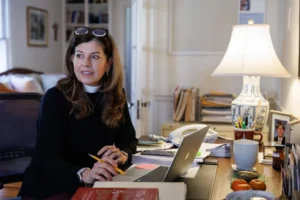
The Rev. Elizabeth Keeler of Trinity Episcopal Church on helping seniors with social isolation: “I’ll joke and say it’s like laundry, like it’s never done. You just have to keep at it.” (Photo/Luke Christopher)
The Rev. Elizabeth Keeler, rector of Trinity Episcopal Church in the Town of Washington, thinks that kind of collaboration gives Rappahannock an advantage over suburban and urban communities where social agencies tend to be more siloed.
“Because we’re small, we can work together,” she said. “I almost feel we’re more on top of it. In the city, people can get lost.”
But Keeler acknowledged that keeping seniors engaged requires both patience and persistence.
“I’ve seen it happen in our congregation where a person loses a spouse, and there’s the tendency to hole up and not leave their home,” she said. “So I’ll tell them that I’ll leave them alone for a little while. But I say, ‘I’m gonna call you, and I’m gonna stop by, and I’m gonna try to pull you back into the community.’
“I’ll joke and say it’s like laundry, like it’s never done. You just have to keep at it. That’s kind of what we’re called to do, It’s not a check-the-box thing. It’s rolling up our sleeves and keeping at it.”
Read: Resources for seniors in Rappahannock and region


